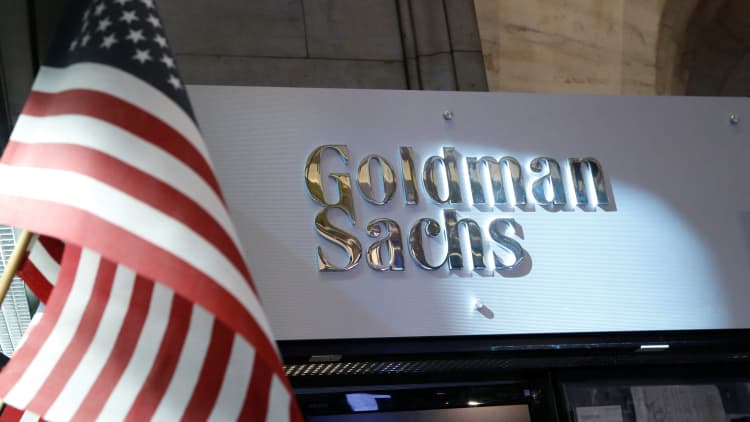
Bank earnings kick off on Friday, and analysts are urging caution ahead of those results.
Today, Citigroup downgraded Goldman Sachs and Comerica to "sell," saying "We view the banks as trading stocks and following the recent run, we don't really see a compelling risk/reward for the group." Regarding Goldman's fabled trading platform, Citi said: "While we expect GS will see improved trading revenues going forward, the path is relatively uncertain and the bar is relatively high."
They're not the only ones worried about bank valuations. Nomura, in a note today on regional banks, said,"[W]e believe share prices already discount the upside for most regional banks" though they highlight KeyCorp, Wells Fargo, Huntington Bancshares, and US Bancorp as possible outperformers.
None of this is surprising, but it is refreshing hearing caution from normally upbeat analysts. Banks were huge outperformers in the fourth quarter: the SPDR Bank ETF, a basket of large banks, was up 30 percent in the fourth quarter and 25 percent since the election.
Here's the problem: banks have moved so fast that there is a risk that we could have a pullback before we move higher. They are already reflecting much of the upside from higher interest rates and the potential for lower corporate taxes and less regulation, as Citi and Nomura have noted.
As for the fundamentals, they are not bad:
- The yield curve steepened after the election, but as yields have dropped in the last three weeks banks have slipped. As for net interest margins (NIM, the difference between interest income generated and the amount paid out to deposits), more rate hikes implies an improvement in NIM. How much? It'snot clear, but Nomura estimates a 40 basis point improvement after five 25 basis point hikes in the Fed funds rate between the first quarter of 2017 and the third quarter of 2019. That is significant, considering most banks have a NIM of roughly 3 percent.
- For most banks, loan growth is continuing in the low-to-mid-single digit range:
Banks: Q4 loan growth
(quarter-over-quarter)
Commercial/Industrial up 1.1%
Commercial Real Estate up 2.3%
Consumer up 1.5%
Source: Susquehanna
Bottom line: Expect banks to be moderately upbeat about the economy, the yield curve, and loan growth.
But don't be surprised if very few are willing to stick their necks out and put hard numbers around the great triumvirate of tax cuts, less regulation and stimulus programs. Bank officials are well aware of the import of lower taxes, but most have been reluctant to say anything concrete.
One of the few who has ventured to comment is Terry Dolan, CFO of US Bancorp, who spoke at a Goldman Sachs U.S.Financial Services Conference in December: "[I]f the tax reform ends up coming...let's say, for example, rates drop by 10 percent, what we're going to see is probably 50 percent or 60 percent of that accruing to the EPS of the U.S. Bank. So, you're going to see a benefit associated with that, which enables us to have some more flexibility maybe with respect to capital or whatever may be the case."
That, obviously, would be a significant boost to earnings. The concern is the Street may be about to lean that lower taxes, repeal of the Volcker Rule and a massive rewrite of Dodd-Frank will take far longer than many expected.



